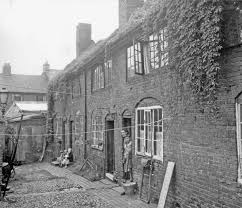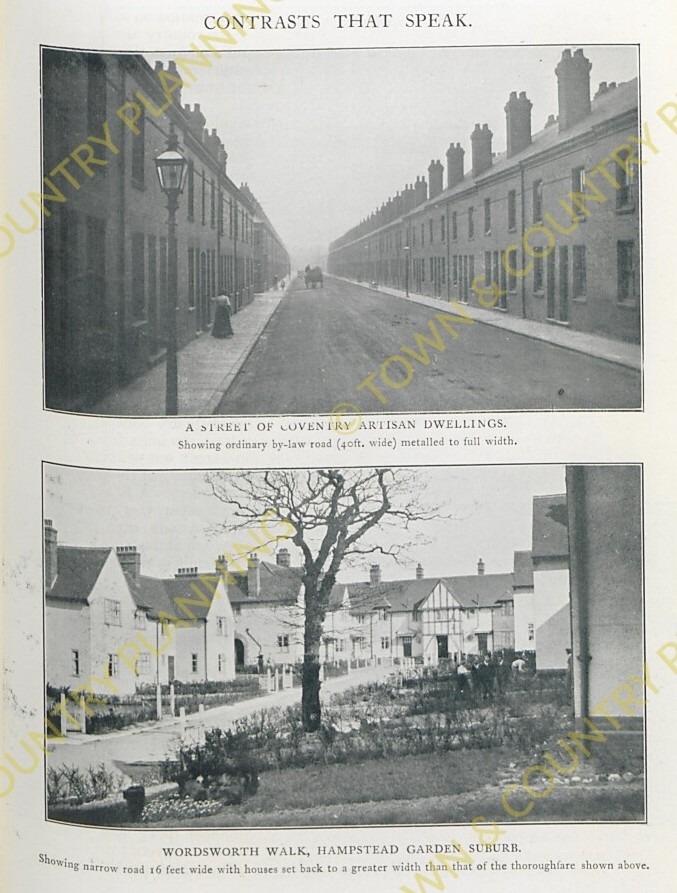
Coventry Society Committee member, Tim Brown, gave us an interesting presentation on the history of corporation housing on 12th February 2025. In a talk entitled “Two Steps Forward and One Step Back” Tim brought to life the stuttering history of our city’s housing. Tim writes…..
Coventry is a particularly interesting case in illustrating the challenges faced by reformers in providing good quality affordable housing for the working class. Despite campaigns by the emerging trade union and labour movement, the Medical Officer of Health, radical liberals, and some conservatives, by 1914 only between 225 and 300 corporation homes had been built mainly in Kingfield Road & Pridmore Road (184 houses) and Short Street (22 flats). Even so, rents were beyond the means of those households on the lowest incomes living in the worst housing conditions in the private rented sector who were paying between 1s 9d and 4s per week. Corporation homes had rents of 5s 6d per week and the rent for flats was 4s 6d per week.
However, these rents were lower than better quality private rented property at 7s 6d per week as well as the Coventry Garden Suburb co-partnership homes being built between 1911 and 1914 on Lydgate Road in Radford with rents between 6s 6d and 7s 6d per week. The Garden City and Garden Suburb movement, nevertheless, argued that the quality of their homes and neighbourhoods were superior to the ‘mean housing’ provided by private landlords and corporations.
The challenges faced by corporations centred on the lack of national government subsidies in the Housing of the Working Classes Act, 1890, which was the first piece of legislation that enabled corporation housing to be provided. The result was that the cost of borrowing finance to develop homes and flats fell on the local ratepayers.
For example, a special committee of the City Corporation in the late 1890s proposed an experimental scheme with rents between 2s 6d and 3s 6d per week. But it was not approved mainly because of the impact on the rates.
Corporation housebuilding ceased with the start of the First World War. However, an agreement between Coventry Corporation, the Ministry of Munitions and the Local Government Board (which eventually became the Ministry of Health) resulted in the development of 680 homes at Stoke Heath built on garden suburb principles as well as other schemes on London Road and on Engleton Road in Radford. These were initially for munitions works but the properties were transferred to the Corporation after the war.
A further significant boost to corporation housing was the Tudor Walters Report in 1918 and the Housing & Town Planning Act, 1919 (which is often referred to as the Addison Act after Christopher Addison, the Minister for Health). Combined, these provided generous national subsidies for homes built to garden suburb standards.
In Coventry, this resulted in the completion of estates started before the War such as Upper Stoke (Hastings Road and Goring Road) and Charterhouse (e.g. St George’s Road). Evidence suggests that the rents initially charged were only marginally above those for overcrowded private rented property.
However, this proved to be a false dawn for corporation housing nationally and locally. The national target of 500,000 new homes fit for heroes was not realized with only 200,000 built, while by 1921 subsidies were reduced leading once again to ‘mean’ corporation housing with higher rents.
In the case of Coventry, no large new corporation estates were started. The City had to wait until 1925 for the development of the Radford estate covering 138 acres and built under different legislation. By that time, the local Medical Officer of Health was pointing out that the corporation waiting list was over 5,500 and there were large areas of insanitary private rented housing that needed to be cleared.
Was, therefore, the Addison Act a failure? Yes, in terms of numbers. But it cemented the concept of national government subsidies for what became known as council housing. In Coventry, this contributed to the proportion of council housing growing from less than 1% of the stock in 1921 to 25% in 1971.

